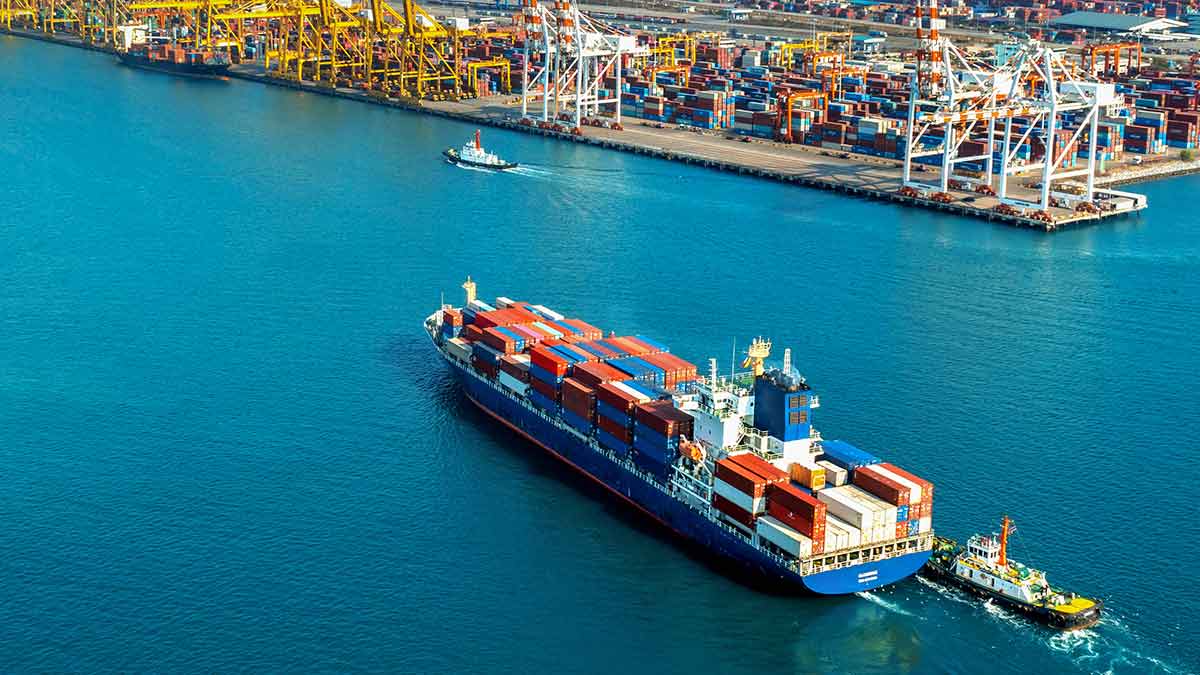Table of contents
Are you looking to import food products to the Philippines? The Philippines’ total food imports were valued at USD 4.84 billion in 2022, which accounts for 13.5 percent of the country’s total imports.
To import food products into the Philippines you have to get approval from two regulatory agencies:
- Food and Drug Administration (FDA). FDA is responsible for ensuring the safety and quality of food, drugs, and cosmetic products sold or imported into the country.
- Bureau of Agriculture and Fisheries Standard (BAFPS) in the Philippines if you import agricultural or fisheries products.
This article provides a detailed guide to the procedures required to establish a food import business in the Philippines.
Process of registering food products with the Food and Drug Administration in the Philippines
The FDA falls under the supervision of the Department of Health (DOH). It monitors, regulates, and controls the manufacturing, importation, exportation, distribution, and sale of food products.
Companies that are planning to import food products into the Philippines are responsible for complying with the FDA regulations.
Emerhub assists in the import process by ensuring compliance and submitting the necessary documents to the FDA.
Get in touch today to get started.
Step 1: Set up a company
- The first step towards setting up a company in the Philippines is to obtain Securities and Exchange Commission (SEC) license.
- Apply for a business permit from the Local Government Unit (LGU) where the company will operate.
- Register with the Bureau of Internal Revenue (BIR) and obtain a Tax Identification Number (TIN).
- Enroll your employees with social institutions including Philippine Health Insurance Corporation (PhilHealth), Home Development Fund (Pag-IBIG), and Social Security System (SSS).
Learn more about setting up a company in the Philippines
Step 2: Application for product registration
- After setting up a local entity, Emerhub submits an application for product registration to the FDA on your behalf.
- The required documents for this application are product information, intended use, and ingredients.
- Based on this review, the FDA determines whether or not to approve the product for registration. Upon approval, it moves on to the next step.
Timeline: The FDA reviews the application and documents in 10-20 days.
Step 3: Product evaluation
- The FDA reviews the application and evaluates the product’s safety, quality, and efficacy.
- After a successful evaluation, the product moves on to the next step.
Timeline: FDA takes 20-30 days for product evaluation.
Step 4: Certificate of product registration (CPR)
- The FDA issues a CPR to the import business, allowing it to legally import and distribute the product.
- CPR is valid for 5 years, after which the product must be re-registered in the Philippines.
Timeline: The FDA takes 5-10 working days to issue a CPR.
Penalties for violating FDA regulations on importing food products
To ensure the safety and quality of imported food products, the FDA in the Philippines conducts regular inspections of businesses both, during the application process for permits and even after they have received their permit. Random evaluations involve unannounced inspections of facilities and products to check if they meet the standards and requirements set by the FDA, while scheduled evaluations are typically conducted when businesses apply for permits or renewals of licenses with the FDA.
- The FDA imposes fines on food import businesses found to be in violation of their regulations. The amount of the fine is up to PHP 500,000 (approximately $10,000) per violation.
- If the FDA finds that a business is importing or selling products that are unsafe or do not meet its regulations, they have the right to seize and destroy the products.
- If the FDA finds that a business has repeatedly violated its regulations, it suspends or revokes the business’s license to operate.
- The FDA has the authority to file criminal charges against businesses that are importing food products without proper licenses or engage in fraudulent activities.
Process for registering food products with the BAFPS in the Philippines
The Bureau of Agriculture and Fisheries Standards (BAFPS) in the Philippines is responsible for developing and promoting standards for processed foods. It ensures that imported food products meet the standards set by the Philippine government in terms of quality, safety, and labeling requirements.
Emerhub helps businesses to import food products in the Philippines by registering them with the BAFPS.
Step 1: Submission of application
All businesses looking to import food products in the Philippines must submit an application for product registration with BAFPS. The application should include the following.
Product label
The label should include the product’s name, ingredients, nutritional information, production, and expiration dates. The label should be in Filipino and English.
Certificate of analysis from a laboratory accredited by the department of science and Technology (DOST)
These labs include:
- DOST regional standards and testing laboratories – food analysis laboratory
- DOST-industrial technology development institute – food research and development division
- DOST-food and nutrition research institute – food and nutrition research laboratory
Documentary requirements including a copy of the company’s registration with the department of trade and industry (DTI)
Timeline: BAFPS takes 2-4 weeks for the approval of the application.
Step 2: Product evaluation
BAFPS evaluates the product and its labeling to ensure that it complies with the agency’s standards and requirements. This evaluation includes laboratory analysis of the product to ensure that it is safe and meets the agency’s quality standards.
The importer has to submit a product sample for testing and is responsible for covering the costs of the evaluation and laboratory testing.
After a thorough product evaluation, the BAFPS approves the products to be imported and sold in the Philippines.
Penalties for violations of BAFPS regulations on importing food products
If a food import business is non-compliant with BAFPS requirements, it bears the administrative penalties for violation from the Philippine Food and Drug Administration (FDA). Administrative penalties include fines, suspension, or revocation of licenses or permits, depending on the severity of the offense.
Requirements to import food products in the Philippines
The Department of Agriculture (DA) along with the Department of Health (DOH), and the Bureau of Customs (BOC) created the import requirements for businesses planning to import food products into the Philippines.
Each shipment of food products entering the Philippines should meet the following requirements:
Prohibited goods regulations
A food import business must review the list of prohibited goods in the country. The Philippines does not allow food items that threaten human life or well-being. The prohibited goods include:
- Products containing meat from countries affected by animal diseases.
- Affected fish and other aquatic products
- Food products containing dangerous substances, such as poisonous and hazardous chemicals and food additives that are not permitted for use in food production.
- Unregistered food products and those without proper labeling and packaging.
- Products that are past their expiration date or those that are spoiled, and adulterated.
Duty assessment
All food and agricultural products, including plant products, entering the Philippines are subject to duty assessment that ranges from 5%-10%. The Bureau of Customs (BOC) is responsible for assessing and collecting duties on imported food products.
Required documents
A business planning to import food products in the Philippines should provide the required documents to the Bureau of Customs (BOC) at the point of entry into the country.
Providing these documents is necessary to avoid potential delays at customs and ensure a smooth import process. The documents serve as evidence of the contents, value, and origin of the imported goods, and are required to assess the appropriate customs duties and other charges that apply.
The list of documents includes:
- Packing list: A document that lists the contents of each package or container of the imported goods.
- Invoice: A document that contains the details of the sale, including the description of the goods, the quantity, the price, and the terms of payment.
- Bill of lading: A document that serves as a receipt for the goods shipped and provides information about the transportation of the goods.
- Certificate of product registration CPR: FDA issues this certificate that authorizes the importation of specific goods.
- Certificate of origin: A document that provides information about the country of origin of the goods to determine the applicable tariff rate.
Food inspection and testing regulations
The Department of Agriculture (DA) and the Department of Health (DOH) must inspect and clear the imported food products at the first point of entry into the country.
Process for paying duties and taxes for food import business in the Philippines
The process for paying duties and taxes for imported food products in the Philippines involves the following steps.
Step 1: Determine the tariff classification and customs value of the product
The first step is to determine the tariff classification of the imported food product, which determines the import duty rate later in the process. The customs value of the product, which includes the cost of the product, freight, insurance, and other charges, is also determined.
The determination of the tariff classification and customs value of the product is done before the products arrive in the Philippines.
Step 2: Submit an import declaration
Food importers submit an import declaration to the Bureau of Customs (BOC). The declaration includes information about the imported product, such as the product description, tariff classification, customs value, and country of origin. The submission of the import declaration by the food importer is also done prior to the arrival of the product in the Philippines.
Importers have to file the documents and submit the import declaration to the Bureau of Customs through the Electronic-to-Mobile (E2M) system. The E2M system is a web-based platform that allows importers to submit their import declarations electronically to the Bureau of Customs.
Step 3: Issuance of the assessment notice
The BOC reviews the information provided by the importer and assesses the applicable duties and taxes. Once the assessment is complete, the Bureau of Customs issues an assessment notice to the importer, which indicates the total amount of duties and taxes that are due on the imported product.
The assessment notice also provides instructions on how to pay duties and taxes. The importer pays these fees before the product is released from customs custody.
Step 4: Pay import duty, VAT, and excise tax
BOC calculates the Import duty based on the customs value of the product. Importing food products into the Philippines adds a 12% VAT to the customs value and import duty. In addition to this, the excise tax rate depends on the type of food product and ranges from 5-50%.
These taxes are due when the BOC releases the imported goods.
Step 5: Clearance and delivery
After paying the duties and taxes, the BOC releases the imported goods. The food importer then arranges for the delivery of the goods to their final destination.
Start your food import business with Emerhub
Hiring a professional company, like Emerhub helps you comply with regulations and reduces risk when importing food products in the Philippines.
We act as a local consignee and customs agent, guide the import process, and provide expertise on import taxes and duties to help grow your business. Our team of consultants assists in every step of the process.
Fill in the form below to talk to our experts.







